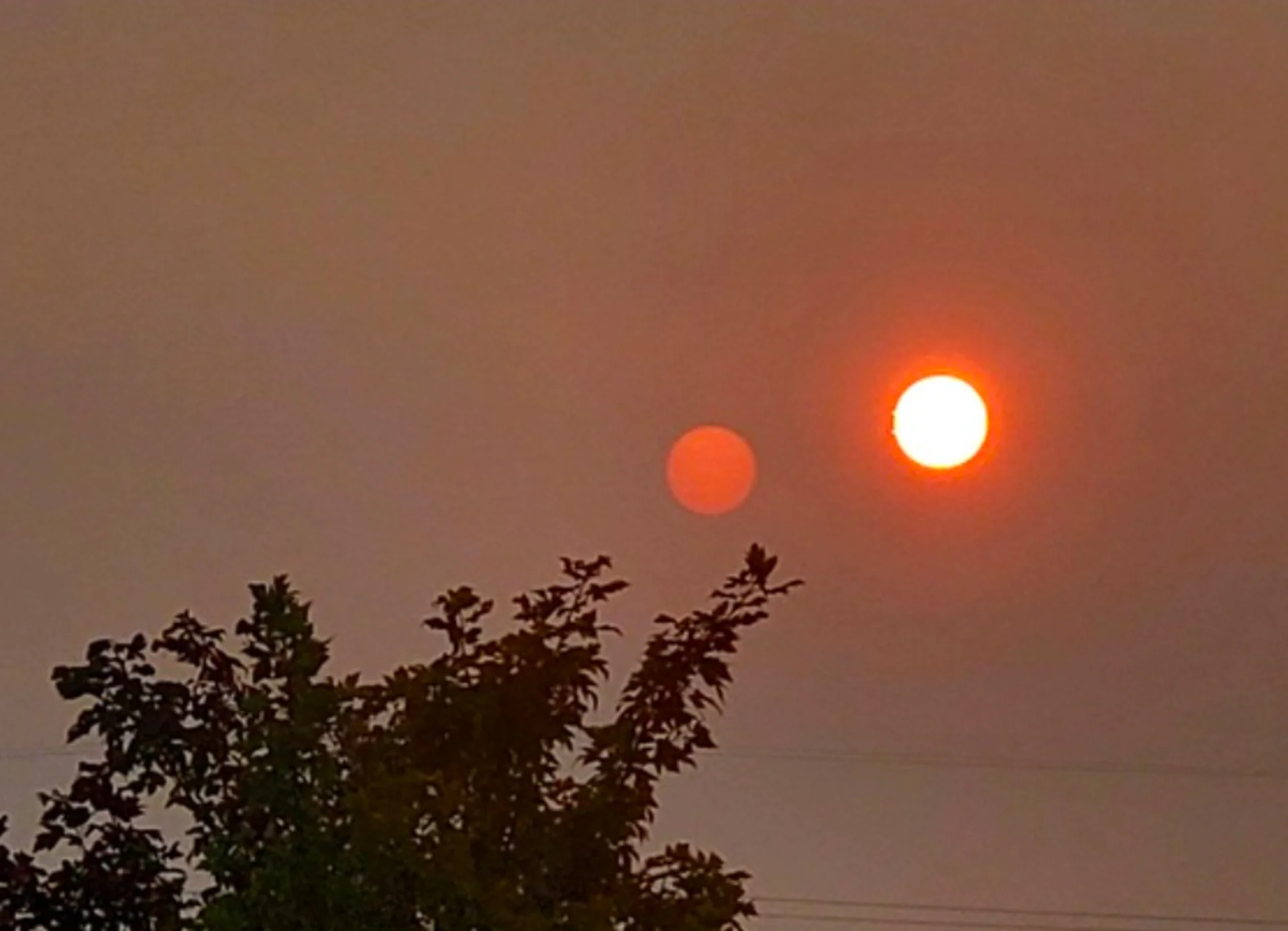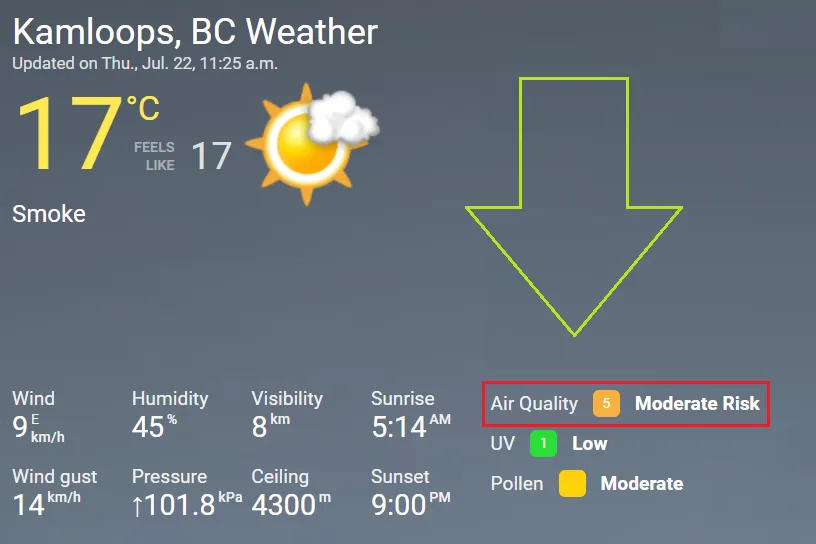
AQI, AQHI, and your health: Understanding air quality ratings
Learn the difference between AQI and AQHI and the health impacts of poor air quality.
Wildfire smoke has blanketed parts of Canada and the U.S., due to tens of active wildfires burning across parts of Western Canada. That has resulted in hazy, smokey skies, reduced visibility, and poor air quality conditions.
Earlier this week, haze from several fires burning in Alberta pushed into Ontario, creating hazy and smoky skies.
WHAT CREATED THE HAZE?
"The smoke particles scatter the light from the sun, giving the sky a milky or reddish appearance. The more particles there are suspended in the atmosphere, the stronger the effect," explains Weather Network meteorologist Michael Carter.
"They also absorb some of the sunlight, which can make the sunlight appear dim and also can cause a cooling effect on the air temperature."

WHAT IS AIR QUALITY?
When air quality is good, conditions are typically clear. "Poor" air is laden with pollutants, chemicals, and, in the cases mentioned above, particles from wildfires.
The Air Quality Index (AQI) is a tool used by many government agencies to communicate to the public how polluted the air is and how polluted it may become over a 48-hour period.
The new Air Quality Health Index (AQHI) takes into account the health effects and environmental concerns associated with varying concentrations of pollution, two factors the AQI does not. AQHI measures the impact of air quality on your health using a scale of 1-10, with 10 and up representing the highest risk.
UNDERSTANDING AQHI RATINGS
Low: 1 - 3
An AQHI rating between 1 and 3 represents ideal air quality for outdoor activities, according to the Government of Canada. For the general population, no precautions are required.
Moderate: 4 - 6
People with respiratory conditions or certain environmental allergies may need to reduce or reschedule strenuous outdoor activities when a moderate AQHI is in effect. For others, it is generally safe to assume outdoor activities unless symptoms like coughing or throat irritation appear.
High: 7 - 10 and very high: above 10
Children and the elderly are advised to limit time outdoors when a high or very high AQHI rating is in effect.
The Weather Network has AQHI ratings on its city pages, making it easy to check air quality in real-time:

LONG-TERM EFFECTS OF POOR AIR QUALITY
In the short term, exposure to poor air quality can result in difficulties breathing, irritation of the nose, throat, eyes, and skin, as well as pneumonia and bronchitis. Headaches and dizziness are also common side effects.
Prolonged exposure to poor air quality can result in heart disease, lung cancer, and conditions such as emphysema.
According to McGill University air pollution causes an estimated 4.2 million premature deaths globally each year.
Health Canada estimates that air pollution contributes to 15,300 premature deaths each year in Canada.
WATCH: Does breathing in wildfire smoke mean lung issues for life?
A HISTORIC AQHI HIGH IN CANADA
In August 2017 wildfires in Kamloops, B.C. pushed the AQHI rating to 49, with concentrations of fine particulate matter averaging around 684.5 micrograms per cubic metre at one point in the downtown area - more than double the daily average that's considered hazardous in China.
Visit www.airhealth.ca for information on how to reduce your health risk and your personal contribution to pollution levels, as well as for current and forecast AQHI values.
Thumbnail image: Submitted to theweathernetwork.com by Samyem Tuladhar, Guelph ON.
